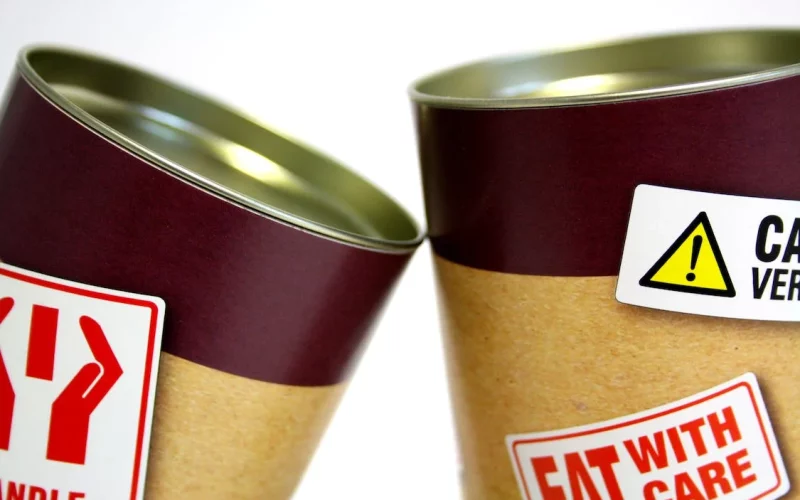Canning is made by canning, which preserves and extends the shelf life of many foods, including meat, fish, vegetables, and fruit. You can buy canned food at any grocery store, but home canning is a popular practice in some cultures.
However, many people are concerned about the health and safety of certain canned foods, including their ability to harbor dangerous diseases like botulism, a serious and life-threatening disease. This article explains everything you need to know about botulism and the risks associated with canning.
What is botulism?
Botulism is a serious disease caused by toxins produced primarily by the bacteria Clostridium botulinum, but also by strains of the bacteria Clostridium baratii and Clostridium butyricum. These toxins are called botulinum neurotoxins (BoNT) because they damage the nervous system, often resulting in various forms of paralysis.
Although this disease is rare, with approximately 475 cases reported each year in the United States, Canada, and Europe, it is a public health concern that requires attention and is potentially fatal.
There are different types of botulism:
Foodborne botulism: Infection caused by eating food contaminated with botulinum neurotoxins.
Gut Colonization: Bacteria invade the body and produce neurotoxins while living in the gut.
Wound botulism: A wound or broken or cracked skin becomes infected with the bacteria that produce botulinum neurotoxins.
Iatrogenic botulism: Infections caused by high levels of toxins injected for cosmetic or therapeutic purposes, e.g. B. Botox injections.
Inhalation botulism: Inhalation of botulinum toxins through accidental release or biological warfare.
Foodborne botulism (or food poisoning) is the most common cause of botulism and will be the focus of this article.
The bacterial strains responsible for the production of botulinum toxins ideally grow in anaerobic (low-oxygen) environments with low acidity, little salt and water, and a storage temperature between 3 and 37 degrees C.
Thus, canned foods provide an ideal environment for bacterial growth.
Signs and symptoms of botulism
The signs and symptoms of botulism develop over a few hours to a few days, depending on how much toxin has been ingested from the contaminated food. For example, a study of 35 years of botulism cases in Turkey found that symptoms developed 26.9 hours after patients were first exposed to the toxin. Other research shows that symptoms usually develop after 12 to 48 hours, but in some rare cases, they don’t appear until 10 to 15 days after exposure to the toxin. This delay in symptom onset, along with the mild symptoms commonly associated with other foodborne illnesses, makes botulism difficult to diagnose.
Botulinum neurotoxins disrupt the nervous system, which is responsible for many of the symptoms that develop. Symptoms of botulism can be mild but increase in severity if left untreated, causing gastrointestinal and visual symptoms and forms of paralysis, including:
– dry mouth (xerostomia)
– Nausea or vomiting
– Constipation or diarrhea
– Stomach pain
– Double vision or blurred vision
– drooping eyelids
– Headache
– facial paralysis
– slurred speech
– Dysphagia (difficulty swallowing) and choking
– urinary retention
– limb paralysis
– Apnea
The combination of these severe symptoms can lead to coma and death.
Treatment may include intubation and, if necessary, intensive care and administration of an antitoxin shown to be effective up to 24 hours after symptom onset.
Most botulism risk comes from home-made canned foods
In general, about 80% of cases of foodborne botulism can be traced back to homemade canning. For example, of the 466 cases of botulism that occurred in Italy between 1986 and 2015, 90% (421 cases) were caused by foodborne botulism, with most being linked to improper canning at home.
Similarly, almost all of the 8,614 cases of botulism recorded in Ukraine between 1955 and 2018 were caused by artisanal canning, with few cases attributed to commercial canning.
Common homemade preserves that have been linked to cases of botulism in several countries include:
– Canned vegetables in oil and brine/water (mushrooms, olives, kohlrabi, leafy greens, peppers)
– preserved and salted fish, smoked fish (tuna)
– Homemade cured meat (ham, pork sausage, salami/sausages)
– Tofu and seitan
Less commonly, certain commercial canned products, including green olives, canned fish, vegetables, and fruits, have been linked to cases of botulism. Commercial unpasteurized dairy products are also high-risk foods for botulism.
summary
Most cases of canned botulism are associated with home-made canned or bottled vegetables, meat, and fish. Commercial canned olives, fish and fruit are associated with fewer cases of botulism.
safety of canned food
In some cultures, home canning is a common practice to maintain access to food during the off-season. For example, many people can use summer vegetables for the winter when food prices can be higher.
Practice safe canning at home:
Blanch vegetables before canning or add boiling water to vegetables in the jar before sealing.
When canning, do not add salt, vinegar, or uncooked vegetables.
Adding garlic has been shown to reduce the risk of botulism.
Consume homemade preserves within six months.
frequently asked Questions
Here are some questions that are often asked about canned goods and botulism.
Can Cooking Kill Botulism?
Unfortunately, bacterial spores that can grow in canned goods produce toxins that survive traditional cooking methods that do not heat food above 100°C.
Therefore, standard cooking does not simply kill the bacterial spores that cause botulism, but botulism can be prevented by pressure cooking, sterilizing your cooking and canning equipment, and using safe food hygiene practices. Commercially, ionizing radiation deactivates bacterial spores.
Can botulism be detected in canned food?
Canned goods, whether homemade or store-bought, can be inspected for contamination.
Throw away the canned food if any of the following conditions exist:
– the can is leaking, swollen or bulging
– the box appears damaged or cracked
– Liquid or foam squirts out of the box when it is opened
– the food in the box is moldy, smells bad or is discolored.
Can you get botulism from smelling or touching contaminated food?
Botulism toxins cannot be absorbed through intact skin or the simple smell of food. However, if you touch contaminated food and then touch your face, the poison can be absorbed through the mucous membranes of the eyes or nose. The toxin can also infect open wounds or cracks in the skin.
Hand hygiene, including frequent hand washing, is therefore important.
Inhalation botulism is rare and is usually only reported in cases where the toxin is airborne or in the case of a young man who has inhaled cocaine.
Botulism is also not considered contagious, but a person can become infected if they come into contact with the bodily fluids of a person with botulism through the eyes, nose, mouth, or skin sores.
in summary
Botulism is a rare but serious disease caused by neurotoxins produced by strains of Clostridium bacteria. Foodborne botulism is the most common cause of botulism, causing mild to severe symptoms depending on the amount of exposure to the toxin. Difficulty swallowing, headaches, abdominal pain, respiratory failure and even death can occur if the disease is not treated. Most cases of foodborne botulism are caused by home canned or bottled vegetables, meat, and fish. Only a few cases are related to commercially preserved olives, fish and fruit.
The safety of canned food reduces the risk of botulism. Throw away canned goods that show signs of contamination, store them safely at home, cook canned goods at high temperatures, sterilize cooking equipment and wash your hands regularly.





